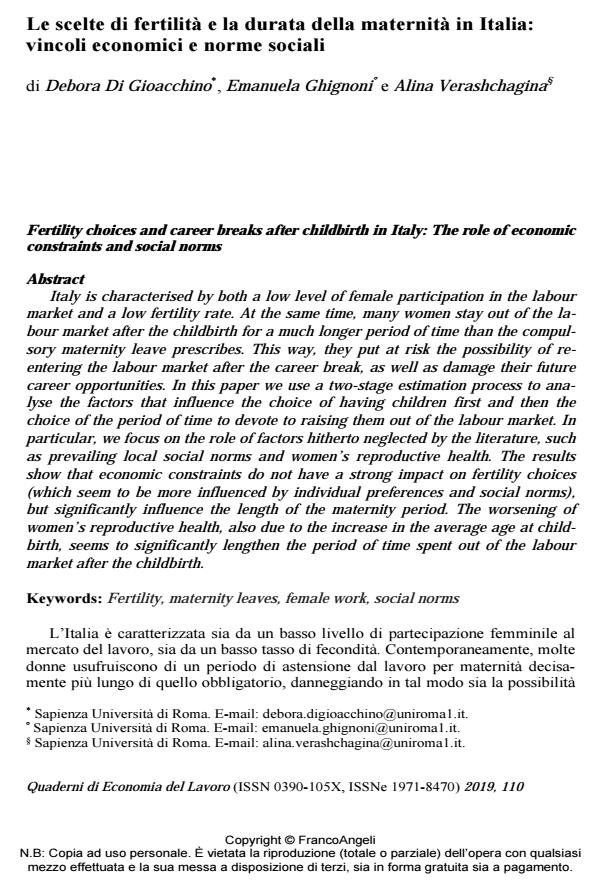Fertility choices and career breaks after childbirth in Italy: The role of economic constraints and social norms
Journal title QUADERNI DI ECONOMIA DEL LAVORO
Author/s Debora Di Gioacchino, Emanuela Ghignoni, Alina Verashchagina
Publishing Year 2020 Issue 2019/110
Language Italian Pages 18 P. 93-110 File size 214 KB
DOI 10.3280/QUA2019-110005
DOI is like a bar code for intellectual property: to have more infomation
click here
Below, you can see the article first page
If you want to buy this article in PDF format, you can do it, following the instructions to buy download credits

FrancoAngeli is member of Publishers International Linking Association, Inc (PILA), a not-for-profit association which run the CrossRef service enabling links to and from online scholarly content.
Italy is characterised by both a low level of female participation in the labour market and a low fertility rate. At the same time, many women stay out of the la-bour market after the childbirth for a much longer period of time than the com-pulsory maternity leave prescribes. This way, they put at risk the possibility of re-entering the labour market after the career break, as well as damage their future career opportunities. In this paper we use a two-stage estimation process to ana-lyse the factors that influence the choice of having children first and then the choice of the period of time to devote to raising them out of the labour market. In particular, we focus on the role of factors hitherto neglected by the literature, such as prevailing local social norms and women’s reproductive health. The re-sults show that economic constraints do not have a strong impact on fertility choices (which seem to be more influenced by individual preferences and social norms), but significantly influence the length of the maternity period. The worsen-ing of women’s reproductive health, also due to the increase in the average age at childbirth, seems to significantly lengthen the period of time spent out of the la-bour market after the childbirth.
Keywords: Fertility, maternity leaves, female work, social norms
Debora Di Gioacchino, Emanuela Ghignoni, Alina Verashchagina, Le scelte di fertilità e la durata della maternità in Italia: vincoli economici e norme sociali in "QUADERNI DI ECONOMIA DEL LAVORO" 110/2019, pp 93-110, DOI: 10.3280/QUA2019-110005